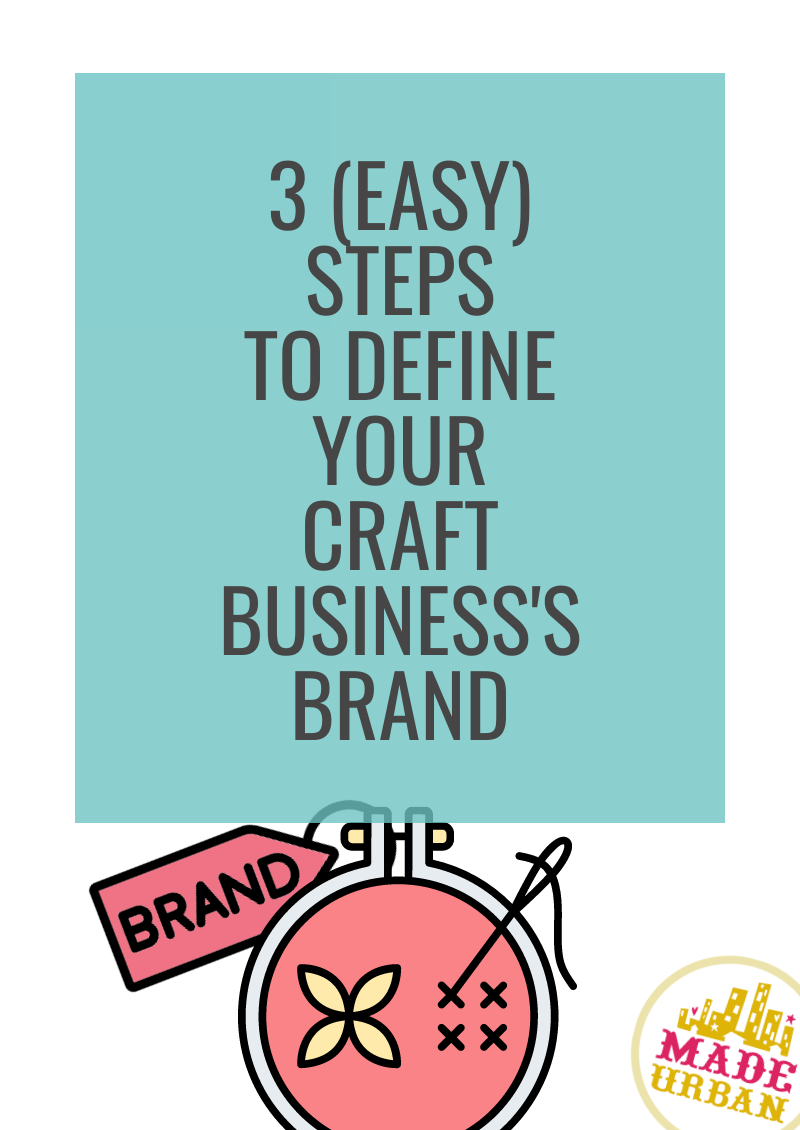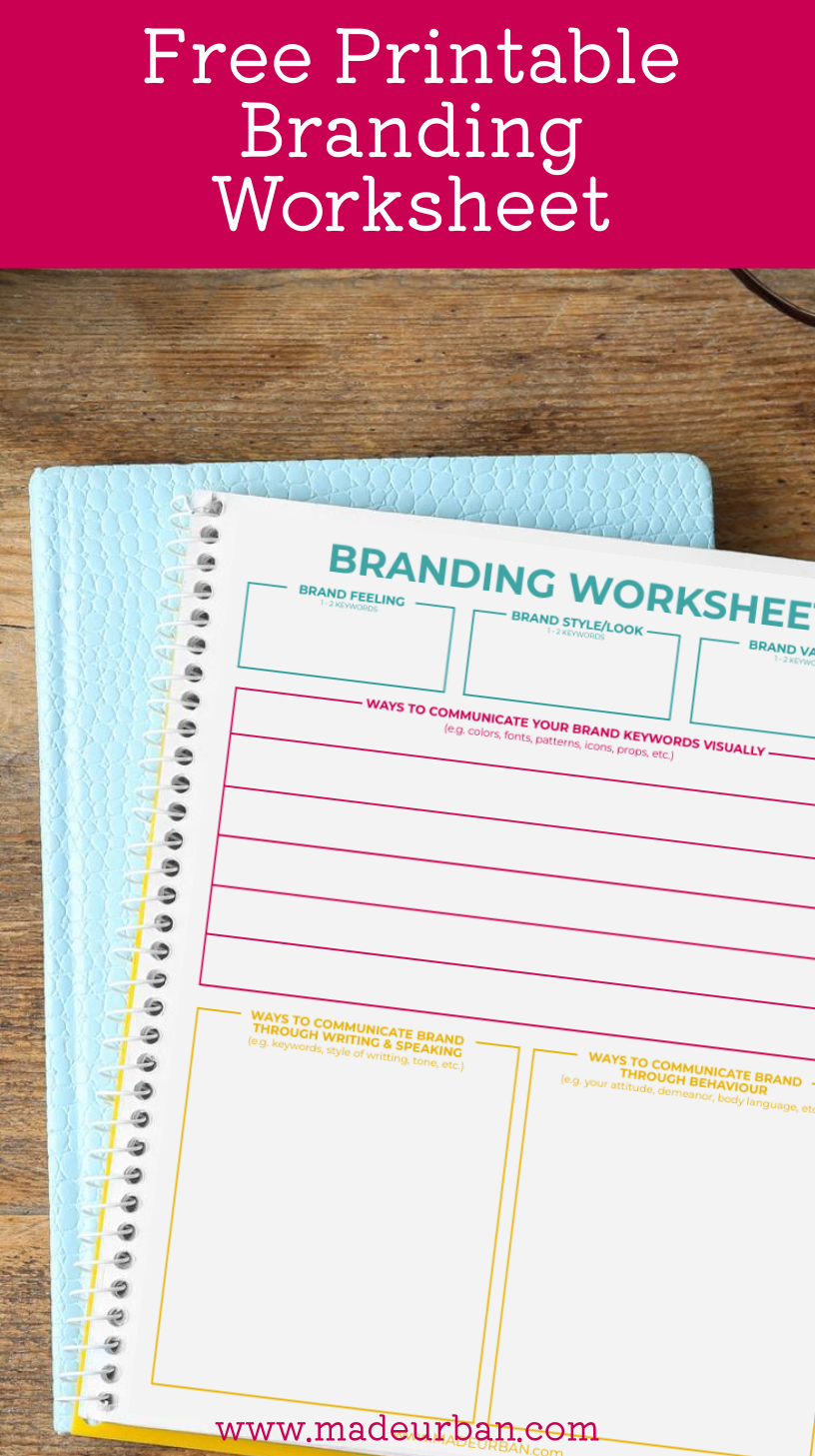3 (Easy) Steps to Define your Craft Business’s Brand
Many small business owners think a brand, or branding, is reserved for big corporations with recognizable logos. That building a brand is too expensive or complicated for a small handmade business.
It can be expensive and complicated.
However, this article will explain a simple way to look at your brand and how you can start building it today (without having to hire a branding expert or logo designer).
You can print the 2-page worksheet here.
Why you should define your brand (even as a small business)
The purpose of a brand is to set your business apart from competitors.
Consumers have thousands of options at their fingertips when it comes to jewelry, candles, art, etc. So if you don’t stand out, you won’t make sales.
Very few “new” products are out there; a brand can help an ordinary product feel different.
Everyone is familiar with the competing brands Coca-Cola and Pepsi. They’re very similar products so they rely on branding to set them apart.
>> Coca-Cola focuses on happiness, community/family, and has more of a classic look.
>> Pepsi focuses on making people feel youthful and hip, and has more of a modern vibe.
There are many ways these two brands communicate these messages, but if you think about some of their popular commercials, Coca-Cola often has a joyful, wholesome, family-focused feel (think; polar bear commercials) while Pepsi often features young, hip celebrities and music in theirs.
Some people do have a preference based on taste, however, many consumers will choose one product over another based on the way the brand makes them feel or how it might make others perceive them (e.g. I’m young and hip so I drink Pepsi).
The other benefit to defining your brand is that it acts as your North Star to create cohesion throughout your business.
If I decide my brand’s message is cheerful, playful, and whimsical, it makes it easy to choose website colors, fonts, products and product materials/designs/features, write descriptions, etc. that align with those keywords.
How to define your brand
A brand is communicated in several ways; most commonly through:
- Visual elements
- Written and spoken elements
- Behaviours
Below are 3 steps to take to define your brand so you can communicate it through different parts of your business.
Step 1 – Feeling
Think about your target market or ideal customer and how you want them to feel when they’re using your products. Or better yet, how they want to feel when using your product.
For example, someone selling jewelry may want their customers to feel elegant and classy when wearing their pieces (or fun and sassy, or polished and classic).
If “elegant and classy” were the chosen feelings, that would become the feel of their brand and trickle into other areas of their business.
Consumers should also get an “elegant and classy” vibe when:
- shopping their Etsy store or website
- browsing their craft show booth and talking with the vendor
- reading the business’s emails
- etc.
Choose one or two words to describe the feeling you want your business and its products to evoke.
Step 2 – Style
Because your brand’s message will be communicated through several visual elements (e.g. website design, craft show display, products, packaging, logo, etc.), it’s important to define the style or look of your brand.
Sometimes a feeling and look will be synonymous.
For example, “feminine” can describe a feeling and a style.
Whether or not you choose a new word to describe your brand’s style, ensure it can be communicated visually.
For example, “feminine” could be communicated visually through:
- soft muted colors
- script fonts
- florals
- lace, silk, velvet, pearls, etc.
- dainty/delicate details
- soft lines
- etc.

Choose one or two words that describe the look or style of your brand.
Step 3 – Values (optional)
Some businesses serve a bigger purpose. Such as being:
- Eco-friendly
- Cruelty-free
- Toxin-free
- Giving back to a specific cause
- Etc.
There may also be values that are important to you that aren’t as obvious at first glance.
For example:
- Quality – a business owner may pride themselves on the quality of their work
- Customer satisfaction – a business may go above and beyond to ensure each customer is satisfied with their purchase or with their interactions before purchasing.
- Educate – a business may want to not only sell eco-friendly products, but also educate people on how they can reduce their carbon footprint.
If there is a value or purpose that encouraged you to start your business, you can include this in your brand’s definition to help ensure it comes across in everything you do.
Choose one or two keywords that describe your brand’s value(s).
Application
Taking the time to define your brand is pointless if it’s not put to use. There are many ways to apply your brand’s message, so start small and strengthen it over time so you don’t become overwhelmed.
You don’t need to turn your keywords into a tagline; your brand’s definition is just for you (at this point).
Combine your keywords into one sentence/statement.
For example, let’s say I make children’s products. My keywords may be:
- Feeling: Playful
- Style: Vibrant and Modern
- Values: Kindness
My simple brand definition would be: Playful | Vibrant | Modern | Kind
Now you can list all the touchpoints of your business that are:
- Visual
- Written/spoken
- Behavioural
For example:
- Visual:
- Products
- Packaging
- Fonts
- Colors
- Icons
- Attire at a craft show
- Craft show display props/fixtures
- Etc.
- Written/spoken
- Product names/titles
- Product labels
- Product descriptions
- Emails/newsletter content
- Sales pitches (at craft shows)
- Keywords used in craft show signage
- Etc.
- Behavioural
- How you interact with people at a craft show
- How quickly you process online orders
- How you respond to feedback
- How you deal with unsatisfied customers
- Etc.
Once you have your list, think of whether or not a keyword can be applied to a touchpoint, and if so, how it will be communicated.
For example, “playful” may be applied in the following ways:
- Visuals: bright colors, handwritten fonts, toy or game-themed icons or props at a craft show, etc.
- Written/spoken: simple and casual way of writing and speaking, using humour, exclamation points, emojis, etc.
- Behaviour: keeping interactions light and cheerful with craft show shoppers.
As mentioned, not every keyword will apply to every touchpoint.
For example, when it comes to turnaround time for online orders, “playful” doesn’t apply. However, I may add a thank you card to each online order which may use playful colors and text.
Remember, a brand blankets your entire business, not just one element of it.
Once you define your brand, you can slowly start to adapt different elements of your business to reflect it and strengthen it.
>> Click here to print the free 2-page branding worksheet <<


Hey, I’m Erin 🙂 I write about small business and craft show techniques I’ve learned from being a small business owner for almost 2 decades, selling at dozens of craft shows, and earning a diploma in Visual Communication Design. I hope you find my advice helpful!


I do wood burning and make beaded jewelry. A lot of what I do is faith or Christian based. I am wondering how to best display my items at craft markets. I have a 4ft and a 5 ft tables available to me in a 10×10 ft space. HELP